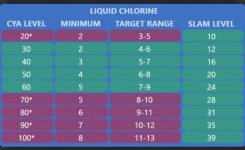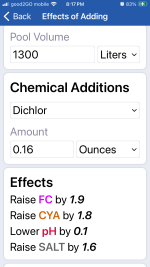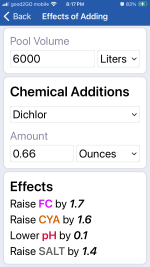You have sorta the right idea about dosing after use & dosing for standby times but the sole use of dichlor will get you into trouble.
Dichlor adds cya which doesn’t leave & builds up requiring higher & higher fc levels to remain sanitary.
After a short while this makes it arduous to properly sanitize as you can see from the chart

The solution is to switch to liquid chlorine once cya reaches 30ppm.
You can use
PoolMath effects of adding to see how much dichlor that is.
Mps is only an oxidizer- not a sanitizer.
Chlorine is both so it’s much simpler to just use that.
Mps causes irritation for some & adds sulfates to the water which are not good for your heaters.
Mps also reads as cc’s when testing (for how long varies) which really wonks up the main metric you have to judge the health of the water as persistent cc’s over .05 ppm mean that it’s probably time for a purge, drain, & refill.
For these reasons most people (myself included) find using mps is not worth the trouble. It’s exact effects on other parameters (ph) are also not listed in poolmath so it’s a no go for me.
Leaving the tub for a week or so is doable with manual chlorination but a month or more is a stretch.
The tub/swim spa eats fc every day, around the clock, so you must feed it accordingly or nasties will grow. If you don’t you will need to purge, drain & start fresh after it has been neglected. Legionnaires, pseudomonas folliculitis, other ear & skin infections etc. are very real dangers with improper sanitation.
Things grow rapidly in that environment.
The bather load is extremely high compared to a pool.
1 person in my 250 gal tub is like having 100 people in my 25k gal pool at once!

If you travel often you may want to look into a saltwater chlorine generator to feed your tub chlorine for you whether you’re home or not.
Controlomatic makes some larger units for swim spas - the megachlor line.
Here’s the guide for caring for your chlorine spa
If you have a question about any information within this Sticky, please start a new thread for yourself where you will receive very quick responses to your specific questions. Thank you! Introduction There are two main things to consider when maintaining your hot tub water, Water Balance and...

www.google.com






